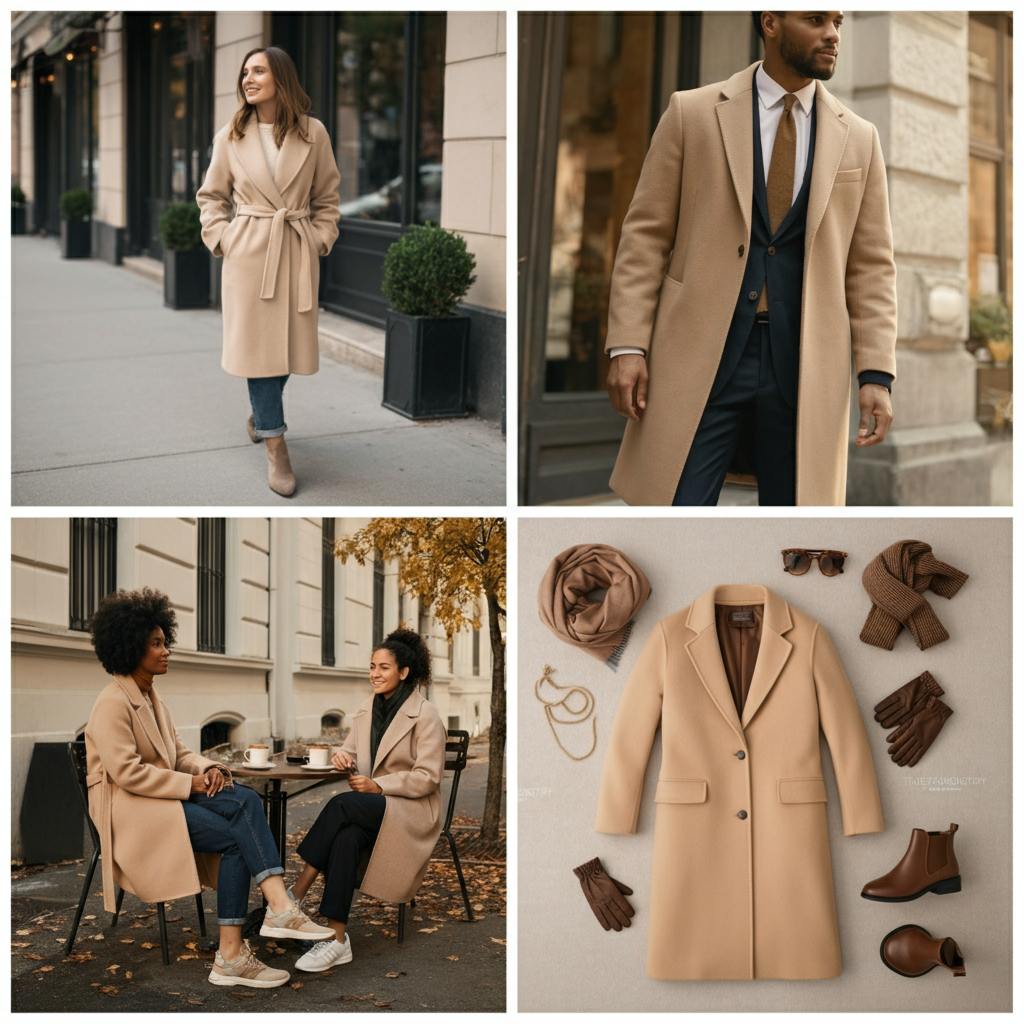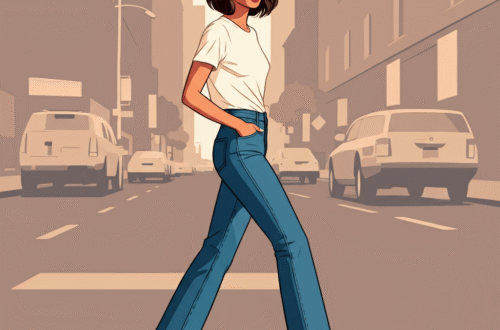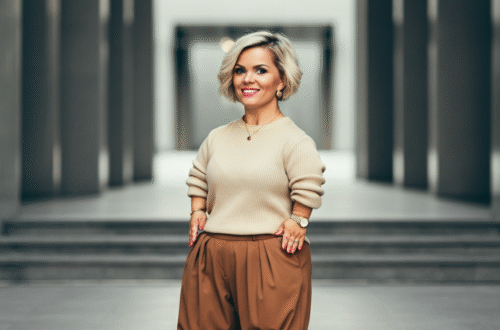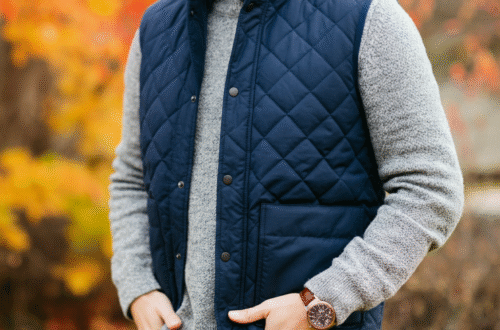The world of fashion is filled with fleeting trends, but some pieces remain eternally stylish. The beige colour coat is one such item—a true wardrobe staple that offers unmatched versatility and sophistication. Whether you’re dressing for a professional setting, a casual weekend outing, or a special evening event, this classic piece of neutral outerwear ties any look together with an air of effortless elegance. Its ability to complement virtually any color palette makes it a wise investment for anyone looking to build a functional and fashionable capsule wardrobe.
This guide will walk you through everything you need to know about selecting, styling, and caring for your perfect beige coat. We’ll explore different fabrics, fits, and how to make this timeless garment work for your personal style, body type, and budget. From understanding the subtle differences in beige tones to finding the right accessories, you’ll soon see why the beige colour coat is celebrated by style icons and fashion lovers around the globe.
Why is a Beige Coat a Wardrobe Essential?
A beige colour coat is more than just an outer layer; it’s a foundational piece that elevates your entire wardrobe. Its enduring appeal comes from its incredible versatility. Unlike black, which can sometimes feel too harsh, or a bold color that limits pairing options, beige offers a soft, neutral canvas. This allows you to experiment with different colors and textures in the rest of your outfit. A beige coat can be dressed up with a silk dress and heels or dressed down with jeans and sneakers, making it suitable for nearly any occasion. This adaptability ensures you get maximum use out of a single garment, which is the cornerstone of a smart, sustainable wardrobe. The neutral shade also transitions beautifully between seasons, looking just as appropriate on a crisp autumn day as it does on a cool spring evening.
The History and Enduring Appeal of Beige Outerwear
The story of the beige coat is closely tied to the history of the trench coat. Originally designed for British army officers during World War I, the trench coat was a functional garment made from gabardine, a waterproof and durable fabric. Its classic khaki-beige color was chosen for camouflage. After the war, soldiers brought their coats home, and Hollywood icons like Humphrey Bogart and Audrey Hepburn soon popularized them, cementing the beige coat’s status as a symbol of timeless cool. The beige colour coat evolved from this utilitarian origin into a high-fashion statement. Designers have since reimagined it in countless styles, from luxurious wool overcoats to casual puffer jackets. Its appeal lies in this blend of history, practicality, and undeniable chic. It represents a classic aesthetic that never feels dated, a quality many seek in building a lasting personal style.
Finding Your Perfect Shade: The Color Theory of Beige
Not all beiges are created equal. This seemingly simple color has a wide spectrum of undertones, ranging from cool to warm. Finding the right shade of beige colour coat for your skin tone can make a significant difference. If you have cool undertones (skin with hints of pink, red, or blue), look for beiges with a grayish, rosy, or taupe base. These shades will complement your complexion without washing you out. If you have warm undertones (skin with hints of yellow, peach, or gold), you’ll shine in beiges with a golden, camel, or sandy hue. These warmer tones will bring out the radiance in your skin. To determine your undertone, check the veins on your wrist; blue veins suggest a cool undertone, while green veins indicate a warm one. If you see a mix, you likely have a neutral undertone and can wear almost any shade of beige beautifully.
Choosing the Right Fabric for Your Beige Coat
The fabric of your beige colour coat determines its warmth, durability, and overall look. Wool is a classic choice, known for its excellent insulation and soft texture, making it ideal for cold winters. For a touch of luxury, a cashmere or cashmere-blend coat offers unparalleled softness and warmth without the bulk. Cotton and cotton blends, often used for trench coats, are lighter and more breathable, perfect for transitional seasons like fall and spring. These materials often have a water-resistant finish, which adds to their practicality. For those seeking sustainable options, recycled polyester and organic cotton are becoming more common. Vegan leather and faux fur also provide cruelty-free alternatives that deliver style and warmth. When selecting a fabric, consider your local climate and how you intend to use the coat.
Material Comparison: Which Fabric is Best for You?
Choosing the right material impacts everything from warmth to maintenance. Here is a simple comparison to help you decide.
|
Feature |
Wool/Cashmere Blends |
Cotton/Gabardine |
Recycled Polyester/Nylon |
|---|---|---|---|
|
Best For |
Cold winters, formal events |
Transitional seasons, rainy days |
Casual wear, light rain, travel |
|
Warmth |
High |
Low to Medium |
Medium (with insulation) |
|
Feel |
Soft, luxurious, can be heavy |
Crisp, structured, lightweight |
Smooth, lightweight, functional |
|
Care |
Dry clean only |
Machine washable or dry clean |
Machine washable |
|
Price |
Mid to High |
Low to Mid |
Low to Mid |
This table provides a quick overview, but always check the care label on your specific beige colour coat for the best maintenance instructions.
A Guide to Different Fits and Styles
The silhouette of your coat defines its character. The classic trench coat is perhaps the most iconic style, featuring a double-breasted front, a waist belt, and epaulets. It’s a versatile choice for both business casual and weekend looks. A wrap coat, with its belted waist and often unstructured design, creates a flattering, feminine silhouette. For a more formal and structured option, the overcoat or peacoat offers clean lines and a powerful presence, perfect for wearing over suits or dresses. In recent years, the puffer coat in beige has become a popular choice for casual, cozy warmth. When choosing a fit, consider your body shape and what you’ll be layering underneath. A slightly oversized fit allows room for sweaters, while a tailored fit provides a more polished appearance.
Decoding Coat Lengths
- Cropped: Ends at the waist or high hip. A trendy choice that works well with high-waisted pants and skirts.
- Hip-Length: A versatile length that offers good coverage without being cumbersome. Perfect for peacoats and casual jackets.
- Knee-Length: The most classic and universally flattering length. It provides ample warmth and works well for both formal and casual styles.
- Midi/Longline: Falls between the knee and ankle. This length adds a dramatic, high-fashion touch to any outfit and provides maximum coverage.
Sizing and Tailoring for the Perfect Fit
Getting the right size is crucial for ensuring your beige colour coat looks its best. A coat that is too tight will restrict movement and look strained, while one that is too large can overwhelm your frame. When trying on a coat, wear a sweater or the type of mid-layer you’d typically wear underneath it to ensure a comfortable fit. Pay close attention to the shoulders; the seam should sit right at the edge of your shoulder. The sleeves should end just past your wrist bone. If you find a coat you love that isn’t a perfect fit off the rack, don’t hesitate to take it to a tailor. A tailor can make simple adjustments, like hemming the sleeves or taking in the waist, that can transform a good coat into a great one. This is especially important for petite and plus-size shoppers, as a few tweaks can create a bespoke look.
Styling Your Beige Coat for Every Season
The versatility of a beige colour coat allows it to be a year-round player, with the right styling. In the fall, pair a beige trench with a chunky knit sweater, dark-wash jeans, and ankle boots for a classic look. You can add a colorful scarf for a pop of personality. During the cold winter months, a longline wool coat becomes your best friend. Layer it over a turtleneck, trousers, and leather boots for a chic and warm ensemble. As spring arrives, a lightweight cotton beige coat is perfect for navigating unpredictable weather. Throw it over a floral dress or a simple t-shirt and white jeans. The neutral tone complements the brighter colors and lighter fabrics of spring, making it an easy and stylish choice.
Dressing for the Occasion
A beige colour coat can be adapted for any event. For the office, a structured trench or wool overcoat looks professional over a suit or a pencil skirt and blouse. For a casual weekend brunch, a relaxed-fit wrap coat or a beige puffer jacket paired with leggings and sneakers is both comfortable and stylish. When traveling, a beige trench is an excellent companion—it’s stylish enough for city exploring and practical enough to handle a light shower. For a formal event like a wedding or a dinner party, a luxurious cashmere or silk-blend beige coat draped over an evening dress adds a layer of sophisticated elegance without overpowering your outfit.
Accessorizing Your Beige Colour Coat
Accessories are the key to personalizing your beige colour coat and making it your own. For a classic, sophisticated look, pair your coat with leather gloves, a wool scarf, and elegant boots. To create a modern, monochromatic outfit, stick to accessories in similar shades of beige, cream, and white. This creates a streamlined and incredibly chic appearance. Don’t be afraid to play with color! A bright red handbag, a vibrant blue scarf, or a pair of bold earrings can stand out beautifully against the neutral backdrop of your coat. The footwear you choose also sets the tone. Loafers or brogues create a preppy, polished vibe; sneakers lend a relaxed, urban feel; and heeled boots or pumps instantly elevate the look for a more formal setting.
Care and Maintenance: Keeping Your Coat Pristine
Proper care is essential to extending the life of your beige colour coat. Always follow the instructions on the care label. Most wool and cashmere coats are dry clean only, as water can damage the fibers and alter the shape. Trench coats made from cotton can sometimes be machine washed on a gentle cycle, but dry cleaning is often the safest bet to maintain their structure and water-resistant finish. Between cleanings, use a lint brush or roller to remove dust and hair. To address pilling, which can occur on wool and blend fabrics, use a fabric shaver or a sweater comb gently. Store your coat on a sturdy, wide hanger to help it maintain its shape, especially at the shoulders. Never hang a heavy coat on a thin wire hanger.
How to Handle Stains and Storage
Accidents happen, but prompt action can save your beige colour coat from a permanent stain. For minor spills, blot the area immediately with a clean, damp cloth. Avoid rubbing, as this can push the stain deeper into the fabric. For tougher stains like oil or makeup, it’s best to take the coat to a professional cleaner as soon as possible and point out the stain. When it’s time to store your coat for the off-season, make sure it is clean. Food stains and body oils can attract pests. Place it in a breathable garment bag—avoid plastic bags, which can trap moisture and lead to mildew. Store it in a cool, dry, and dark place to prevent color fading and damage to the fibers.
Sustainable and Ethical Buying Choices
As consumers become more conscious of their environmental and ethical impact, the demand for sustainable fashion has grown. When shopping for a beige colour coat, consider brands that prioritize sustainable materials and ethical production. Look for coats made from recycled materials, like recycled wool or polyester, which reduce waste and conserve resources. Brands committed to cruelty-free practices will offer high-quality vegan alternatives to wool and leather. Another way to shop sustainably is to invest in a high-quality, timeless piece that you will wear for years, rather than buying into fast-fashion trends. Vintage and second-hand shops are also fantastic places to find a unique, well-made beige coat with a story. For more insights on building a conscious wardrobe, the truefashionstory.com Blog offers great tips.
Key Takeaways
- A beige colour coat is a versatile and timeless wardrobe staple that can be styled for any season or occasion.
- Understanding your skin’s undertone (cool, warm, or neutral) will help you choose the most flattering shade of beige.
- Fabric choice is key; wool and cashmere are best for warmth, while cotton and gabardine are ideal for transitional weather.
- The fit and length of the coat—from a classic trench to a modern puffer—define its style and functionality.
- Proper care, including professional cleaning and correct storage, will ensure your coat lasts for many years.
- Accessorize with color for a bold statement or with other neutrals for a sophisticated, monochromatic look.
- Consider sustainable and ethical options by choosing recycled materials, cruelty-free brands, or shopping second-hand.
Frequently Asked Questions (FAQ)
Q1: What colors go best with a beige coat?
Beige is a neutral, so it pairs well with almost everything. For a classic look, wear it with black, white, navy, or gray. For a bolder style, try pairing it with jewel tones like emerald green, sapphire blue, or ruby red. A monochromatic look with various shades of cream, tan, and brown is also incredibly chic.
Q2: Is a beige colour coat practical for everyday wear?
Absolutely. A beige colour coat is highly practical due to its versatility. Choose a durable fabric like a cotton-blend trench for rainy days or a wool overcoat for cold commutes. Its ability to match almost any outfit makes it an easy grab-and-go option for daily use, from work to weekend errands.
Q3: How do I choose between a camel and a beige coat?
Camel is a specific shade of beige with warm, golden-brown undertones. “Beige” is a broader term that includes shades with cool (rosy, gray) or neutral undertones. If you have warm-toned skin, a camel coat will be very flattering. If you have cool-toned skin, you might prefer a taupe or sand-colored beige.
Q4: Can I wear a beige colour coat in the winter?
Yes, a beige colour coat is perfect for winter, provided you choose the right material. A thick wool, cashmere, or insulated puffer-style coat in beige will keep you warm while looking stylish. Layer it over knitwear and thermal base layers for extra protection against the cold.
Q5: How can I prevent my beige coat from looking dirty?
Regular maintenance is key. Brush your coat after wearing it to remove surface dust. Treat stains immediately and consider applying a fabric protector spray for extra stain resistance. Storing it in a garment bag when not in use will also protect it from dust and potential color transfer from other clothes.
Q6: Is a beige colour coat a good investment?
Yes, it is one of the best fashion investments you can make. Its timeless style ensures it will never look dated, and its versatility means you will get plenty of wear out of it. A high-quality beige colour coat can last for decades with proper care, making it a cost-effective and sustainable choice.
Q7: What is the best style of beige coat for a professional setting?
For a professional environment, a structured knee-length trench coat or a tailored single-breasted or double-breasted overcoat are excellent choices. These styles project an image of polish and sophistication. Stick to high-quality fabrics like wool, cashmere blends, or structured cotton for a sharp, office-appropriate look.
Q8: How do I find a beige coat that fits a petite or plus-size frame?
Many brands now offer dedicated petite and plus-size ranges. For petite frames, look for shorter lengths (hip or knee-length) and tailored fits to avoid being overwhelmed. For plus-size frames, a wrap coat with a belt can create a beautiful, defined waistline. Don’t forget that a good tailor can customize any coat for a perfect fit.





